STREET ARTISTS FROM SOUTHEAST ASIA CO-CREATE A NEW LANDMARK IN KAMPONG GELAM BY TRANSFORMING A 200-METER LENGTH OF SOUND PROOFING WALL INTO A CANVAS FOR GRAFFITI
TEXT: WEE VIRAPORN
PHOTO COURTESY OF ONE KAMPONG GELAM
(For Thai, press here)

As social media continues becoming an increasingly integral part of people’s lives, especially in the past decade, travel destinations are paying extra attention in creating their own photo-op corners. “Instagrammable” has not only just become a real word but actually a term that has been widely included in design briefs (regardless of designers’ nod to the use of such term). Besides architecture, one of the features that always does the job in attracting the attention of the digital generation, particularly in urban spaces, is graffiti.
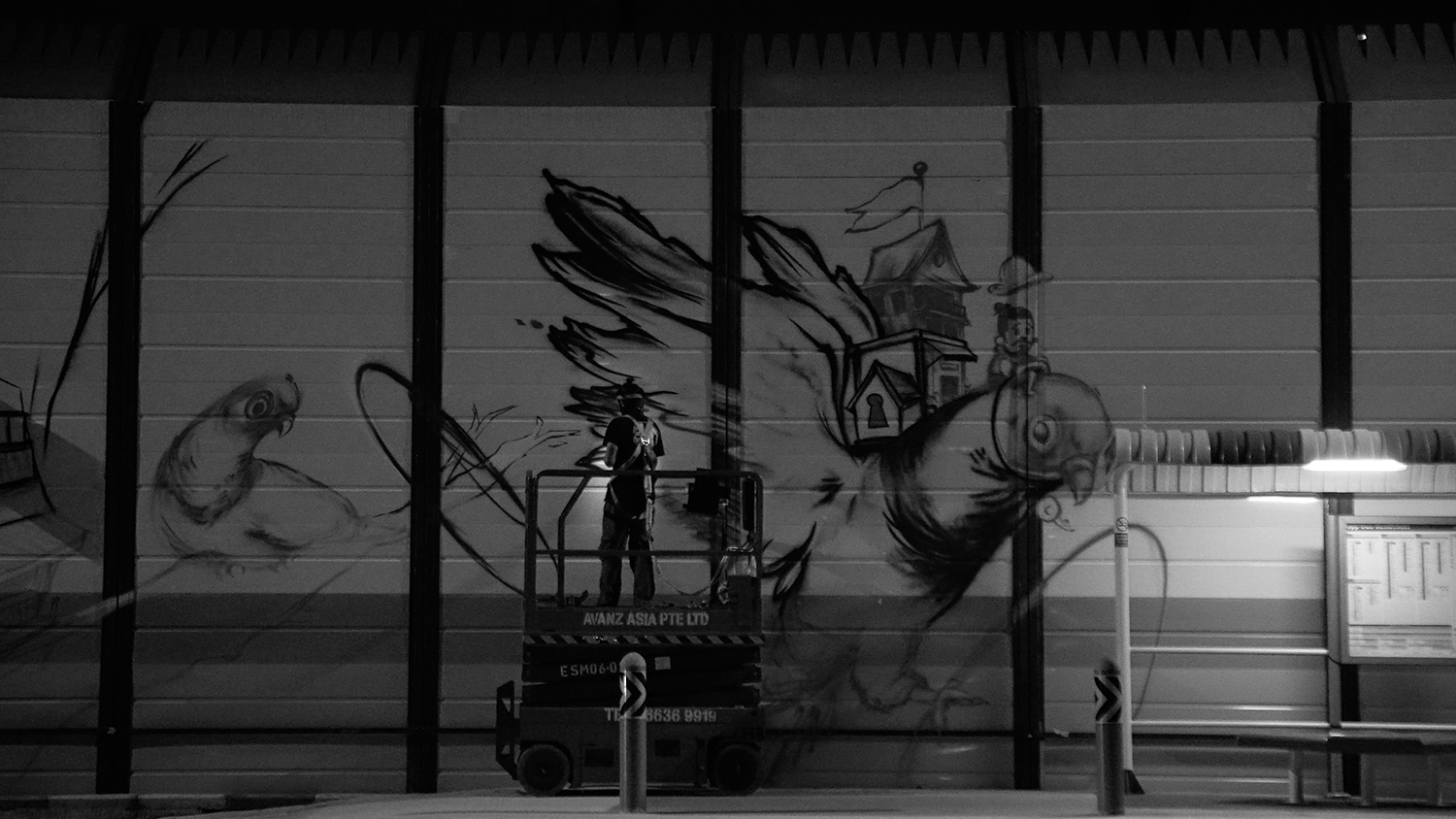

Graffiti and Street art are now art forms that projects’ owners embrace and even commission, the creation process of graffiti art itself is no longer a mischievous activity that artists do secretly without permission. Therefore, we’ve seen works by renowned artists in a much larger scale, sometimes, in the locations that are considered famous landmarks. Graffiti’s growing recognition has reached the point where it is ultimately used by cities as one of the tools for urban development.

Kampong Gelem is one of Singapore’s cultural districts. It’s a hub of the country’s diverse art and cultures that is home to a wide variety of food, architecture, art and culture, as well as several specific museums. The area takes the opportunity from the five meter high sound proofing wall, turning the entirety of its 200-meter length into a canvas for 17 leading and up-and-coming street artists to co-create Southeast Asia’s first “Hall of Fame”.

Local Graffiti Monsters by Noez23 & AshD
The project’s achievement is the result of a collaborative effort between local organizations and a governmental agency, including contributions from Singapore-based Indonesian and Filipino artists. The project’s organizers hope for the wall to become a public space that will continue to welcome more works by leading artists from around the world. Officially opened in late April of this year, Hall of Fame will be hosting several other activities including graffiti workshops with some amazing street artists as facilitators.
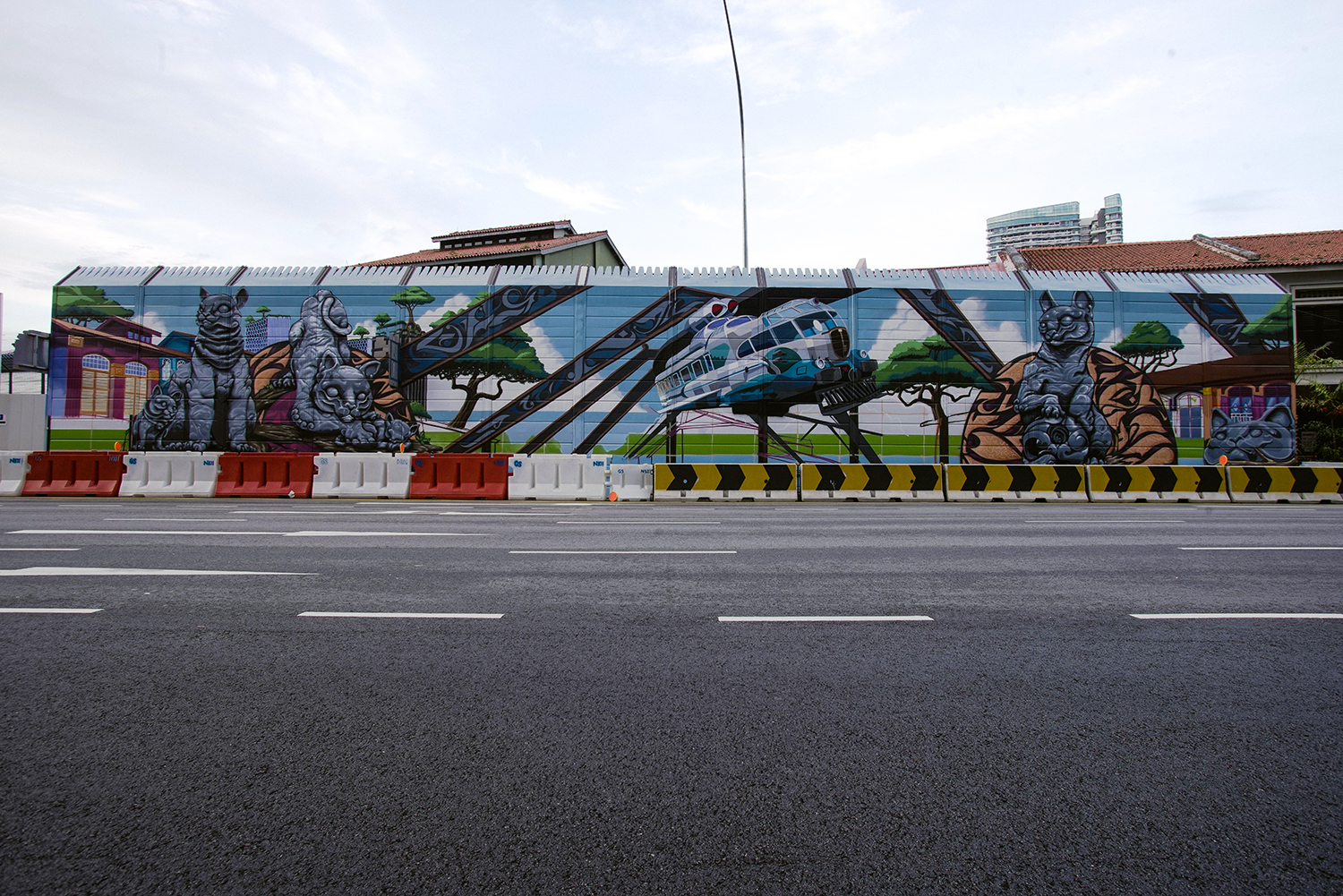
Constant Elevation by ANTZ, Jaba & Hegira
Bringing our attention back at Thailand, we’ve seen several collaborations between Thai and international street artists for art festivals, tourism and promotional campaigns in different cities. Having said that, there hasn’t really been a permanent space that is open to artists to actually take turn and showcase their works to the point where it earns a recognition as a new urban landmark. For the time being, all we can do now is wait and see how and in which direction Hall of Fame will grow to become. But at the end of the day, our hope is for those in charge will finally learn something from the project and start developing something similar in Thailand for a change, especially with the fact that the country is already home to many incredibly talented street artists.
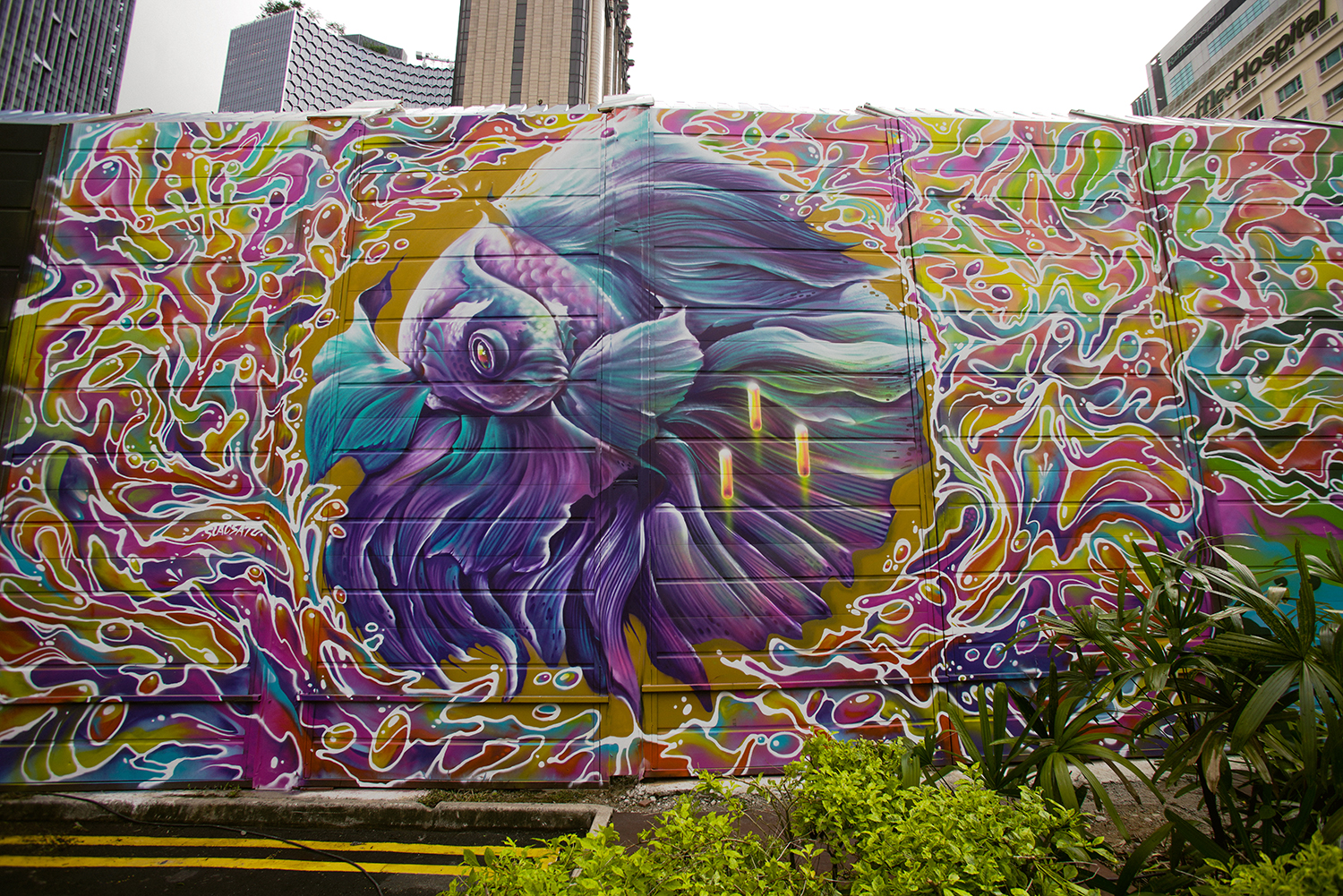
Betta Fish by Slacsatu
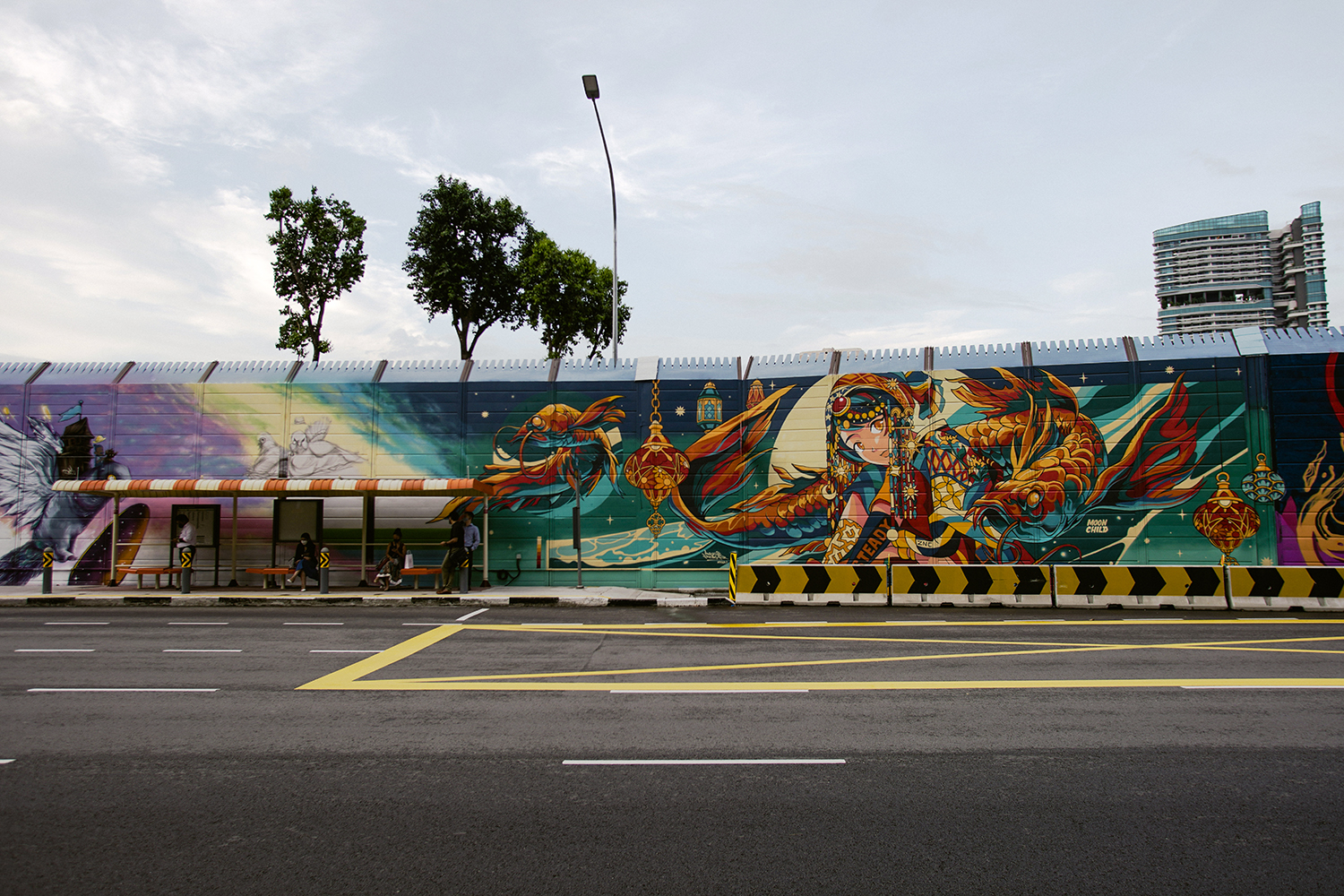
The Journey: Child of Many Cultures by Studio Moonchild
To see the works, concept descriptions and profiles of artists featured in Hall of Fame, visit https://hof.visitkamponggelam.com.sg

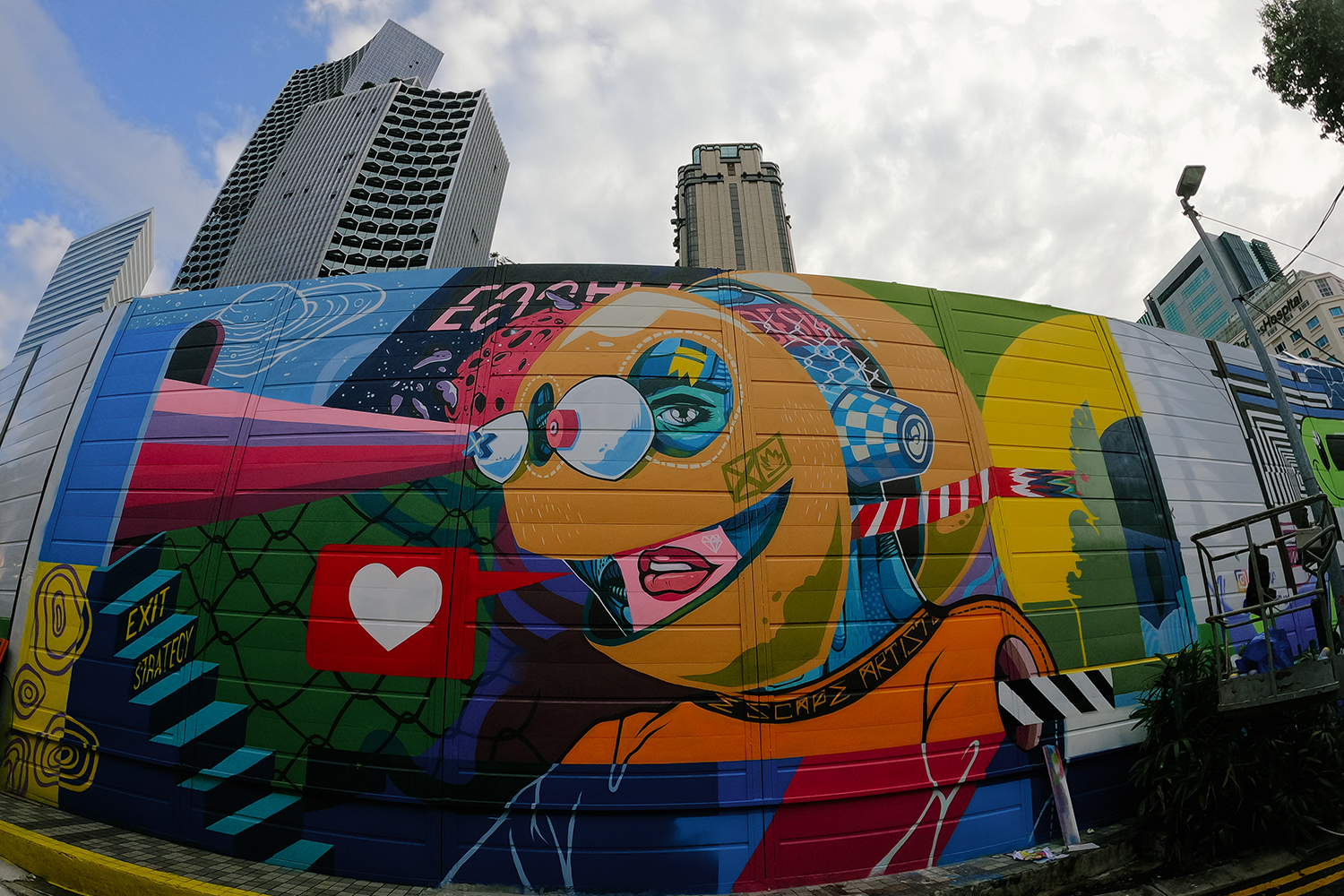 Under the Same Sun by ZERO
Under the Same Sun by ZERO